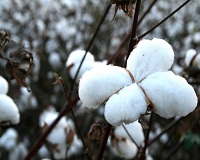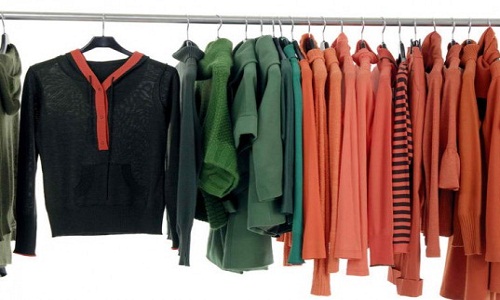"With its inherent properties of breathability, insulation, anti-allergenic and odor control complementing new technologies, Cotton is setting its sights on the performance sector. In the sports and outdoor market, conventional cotton can’t compete with synthetic garments as it cannot manage moisture across its surface on being wet. This is now being addressed, with R&D focused on spinning technology and innovative finishes. Another allegation made by the advocates of synthetics is that cotton isn’t as environmentally friendly as it appears and requires massive amount of water, chemicals and arable land to grow."
 With its inherent properties of breathability, insulation, anti-allergenic and odor control complementing new technologies, Cotton is setting its sights on the performance sector. In the sports and outdoor market, conventional cotton can’t compete with synthetic garments as it cannot manage moisture across its surface on being wet. This is now being addressed, with R&D focused on spinning technology and innovative finishes.
With its inherent properties of breathability, insulation, anti-allergenic and odor control complementing new technologies, Cotton is setting its sights on the performance sector. In the sports and outdoor market, conventional cotton can’t compete with synthetic garments as it cannot manage moisture across its surface on being wet. This is now being addressed, with R&D focused on spinning technology and innovative finishes.
Another allegation made by the advocates of synthetics is that cotton isn’t as environmentally friendly as it appears and requires massive amount of water, chemicals and arable land to grow. The cotton industry is responding to this with responsible and sustainable measures, with Cotton USA and BCI (Better Cotton Initiative) making the biggest moves, especially with traceability.
Circular economy transforms raw materials into fabrics
There is continuing development for man-made cellulosic, derived from tree branches. Lenzing has embraced the circular economy with the pioneering REFIBRA technology. This involves up cycling a substantial proportion of cotton scraps e.g. from garment production, in addition to wood pulp, where the raw material is transformed to produce new virgin Tencel Lyocell fibers to make fabrics and garments.
Digital printing to save water
Zero-D Reactive Pigment, developed by Intech Digital is a reactive pigment digital printing process which requires only one per cent of the water. The printing process helps companies’ stock base fabric and print when necessary in order to deliver on demand. Sustainable and dye-free, these pigments are high wash resistant, similar to textile dyeing. This digital printing isn’t just confined to cotton but can be applied to other natural fibers.
printing process helps companies’ stock base fabric and print when necessary in order to deliver on demand. Sustainable and dye-free, these pigments are high wash resistant, similar to textile dyeing. This digital printing isn’t just confined to cotton but can be applied to other natural fibers.
Finishing process to optimise clean surfaces
Portuguese textile mill Tintex, a regular participant and winner at ISPO Textrends, has incorporated a smart alternative and responsible finishing process into its collection. Naturally Clean takes a cost-effective modern approach that eliminates aggressive treatments and optimises clean surfaces, vivid colours, and beautifully smooth to the touch feel The company maintains the original characteristics for an extended period of time by using Oeko-Tex and Bluesign certified materials, thus eliminating harmful substances.
Nanotex, a Crypton Company & Cotton announced Nanotex Dry Inside technology for cotton apparel. The patented technology enables effective moisture transfer away from the skin, eliminating dampness and chaffing, in 100 per cent cotton apparel, while maintaining the additional comfort aspects of garments made from the natural fiber, especially the soft touch. The processing technology enables cotton to effectively compete with synthetic fiber fabrications in the active and athleisure markets.
With circular economy featuring at the yarn form, a similar process is being achieved at the earlier stage of the textile chain, the cotton seed. Asahi Kasei has relaunched Bemberg, its Cupro band ingredient. Cupro is developed by stripping the cotton seeds of fibers, with each cotton ball carrying up to 45 seeds, with approximately 10,000 and 20,000 fibers. Asahi Kasei has revised its process of retrieving the fibers through a new mechanical process rather than the previous chemical one.
With these new developments ensuring a higher level of performance cotton is soon set to become the latest performance player in the market.












